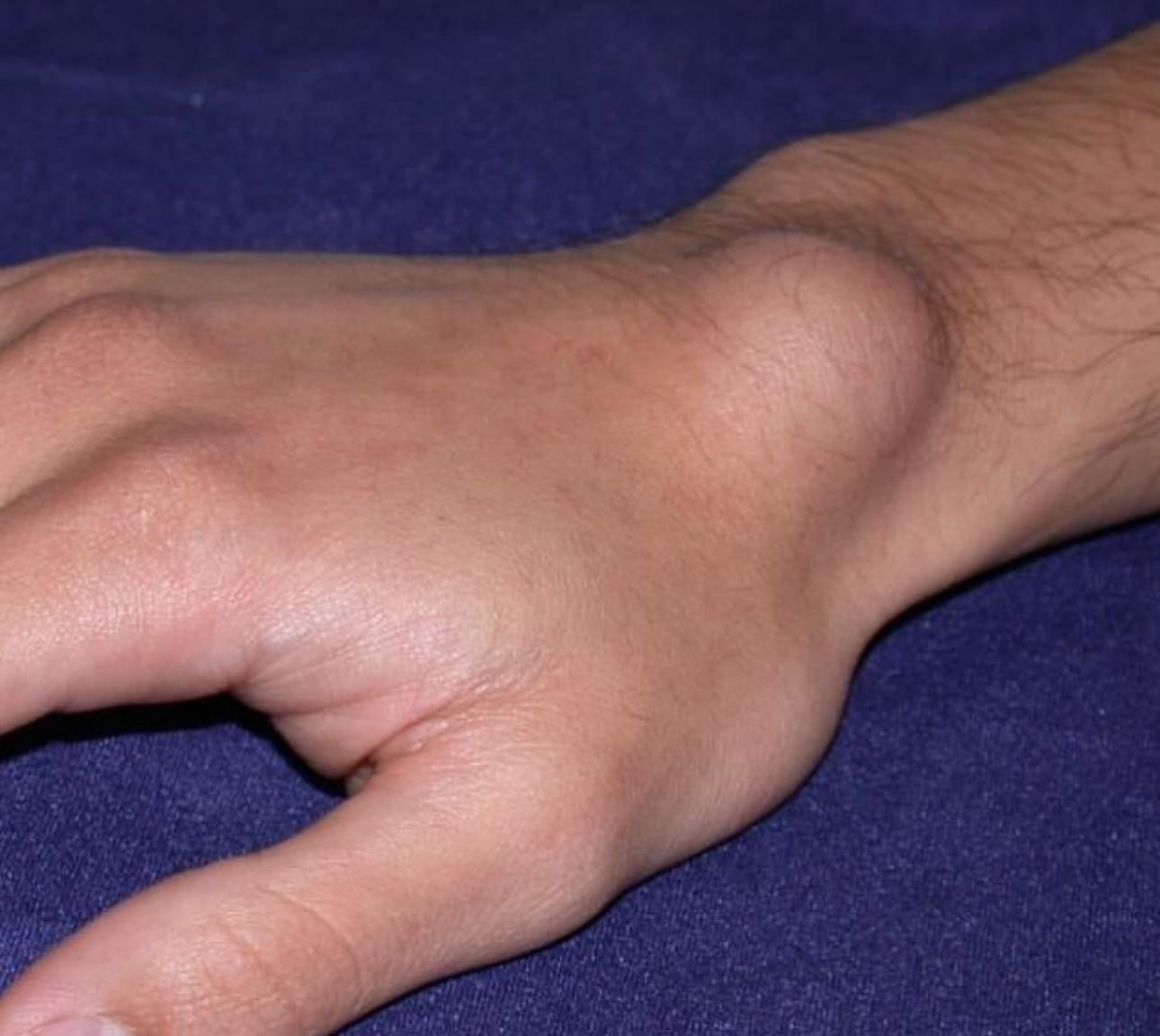Makindo Medical Notes"One small step for man, one large step for Makindo" |
|
|---|---|
| Download all this content in the Apps now Android App and Apple iPhone/Pad App | |
| MEDICAL DISCLAIMER: The contents are under continuing development and improvements and despite all efforts may contain errors of omission or fact. This is not to be used for the assessment, diagnosis, or management of patients. It should not be regarded as medical advice by healthcare workers or laypeople. It is for educational purposes only. Please adhere to your local protocols. Use the BNF for drug information. If you are unwell please seek urgent healthcare advice. If you do not accept this then please do not use the website. Makindo Ltd. |
Ganglion Cysts
-
| About | Anaesthetics and Critical Care | Anatomy | Biochemistry | Cardiology | Clinical Cases | CompSci | Crib | Dermatology | Differentials | Drugs | ENT | Electrocardiogram | Embryology | Emergency Medicine | Endocrinology | Ethics | Foundation Doctors | Gastroenterology | General Information | General Practice | Genetics | Geriatric Medicine | Guidelines | Haematology | Hepatology | Immunology | Infectious Diseases | Infographic | Investigations | Lists | Microbiology | Miscellaneous | Nephrology | Neuroanatomy | Neurology | Nutrition | OSCE | Obstetrics Gynaecology | Oncology | Ophthalmology | Oral Medicine and Dentistry | Paediatrics | Palliative | Pathology | Pharmacology | Physiology | Procedures | Psychiatry | Radiology | Respiratory | Resuscitation | Rheumatology | Statistics and Research | Stroke | Surgery | Toxicology | Trauma and Orthopaedics | Twitter | Urology
🖐️ Ganglion cysts are benign, non-cancerous swellings arising near tendons or joints, most often on the wrist or hand. They contain a jelly-like synovial fluid. They are the most common soft-tissue lesion of the hand and can fluctuate in size.
🔎 Etiology
The exact cause is unclear, but they likely arise from degeneration or herniation of synovial tissue. Risk factors:
- 🔁 Repetitive use / trauma: Overuse or repeated micro-injury.
- ⚡ Joint or tendon irritation: Chronic stress on capsule or tendon sheath.
- 🫧 Synovial herniation: Fluid outpouching through joint capsule.
🩺 Clinical Presentation
- Appearance: Smooth, rounded, firm or rubbery lump under skin; often translucent. Size: pea → golf ball.
- Location: Common on dorsal wrist; also volar wrist (⚠️ close to radial artery), fingers, palm, or foot.
- Symptoms: Frequently painless, but may cause discomfort, aching, or weakness if compressing nerves. Worse with activity.
- Exam tip 💡: They move with the tendon sheath or joint capsule, not freely mobile like lipomas.
📍 Types of Ganglion Cysts
- Dorsal Wrist Ganglion: Back of wrist; most common.
- Volar Wrist Ganglion: Palm side; may involve radial artery (care in aspiration!).
- Flexor Sheath Ganglion: Base of finger; causes pain with grip.
- Mucous Cyst: Over DIP joint; often with OA & nail ridging.

🧾 Diagnosis
Usually clinical. Supportive tests include:
- 💡 Transillumination: Fluid-filled cyst glows.
- 🩻 Ultrasound: Confirms cystic nature, relation to tendon/joint.
- 🧲 MRI/X-ray: Exclude intra-articular pathology, OA, or pre-op planning.
🔀 Differential Diagnosis
- Lipoma
- Epidermoid cyst
- Gouty tophus
- Rheumatoid nodule
- Synovial sarcoma (rare)
💊 Management
- Conservative:
- 👀 Observation: Many resolve spontaneously.
- 🩹 Immobilisation: Splinting reduces fluid pressure.
- 💉 Aspiration: Simple, but recurrence up to 70%.
- 🌡️ Steroid injection: May reduce recurrence post-aspiration.
- Surgical:
- 🔪 Excision (ganglionectomy): Removes cyst + stalk; recurrence ~10–20%.
- 🔍 Arthroscopic removal: Minimally invasive option, esp. wrist.
⚠️ Complications
- ♻️ Recurrence: Common after aspiration; less with excision.
- 🧠 Nerve compression: Median or radial nerve irritation ➝ paraesthesia, weakness.
- 🦠 Infection: Rare post-aspiration or surgery.
- 💥 Historical note: "Bible therapy" (smashing cyst with a book) — no longer recommended!
📚 Patient Education
- 🧘 Activity modification: Avoid repetitive wrist stress.
- 📉 Prognosis: Benign, but recurrence common.
- ⚕️ When to seek review: Rapid growth, persistent pain, neuro symptoms, or recurrent cysts.
📅 Follow-up
Monitor asymptomatic cysts. Refer for surgery if recurrent, painful, or functionally limiting. Post-op follow-up to detect recurrence or infection.
✅ Summary
Ganglion cysts are common, benign swellings arising from joints/tendons. Most are harmless, with treatment ranging from observation → aspiration → excision. Surgery has lower recurrence, but conservative care is often sufficient. Prognosis is excellent. 🌟